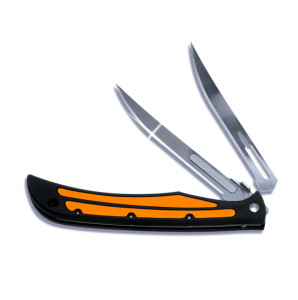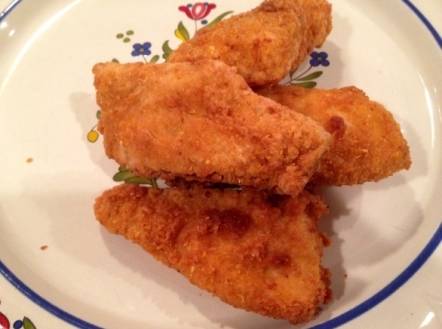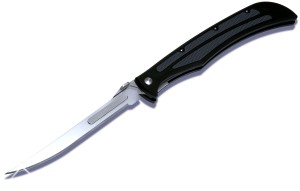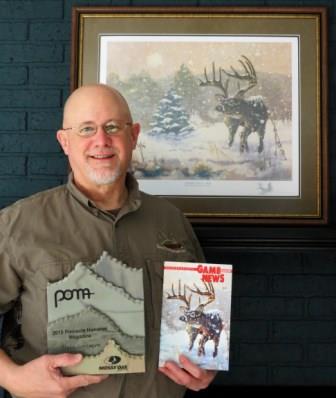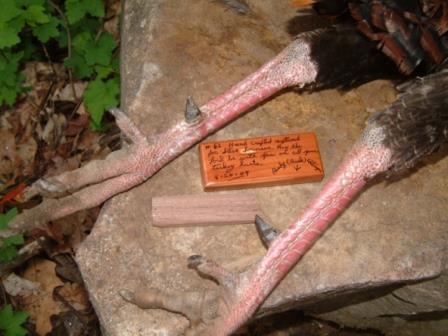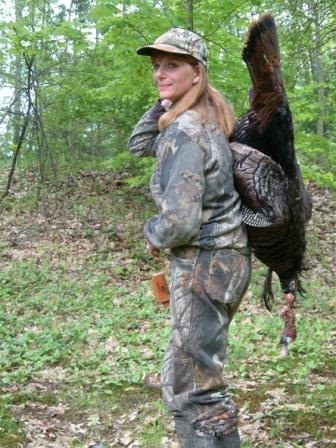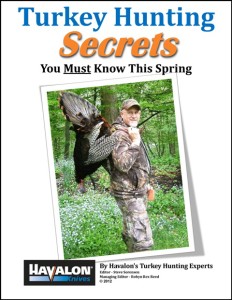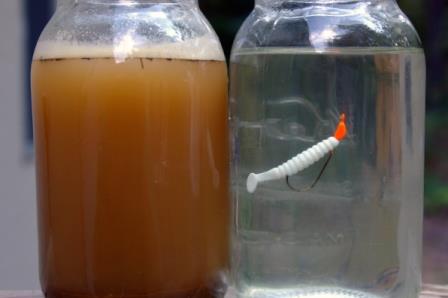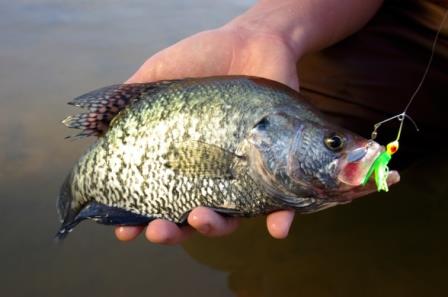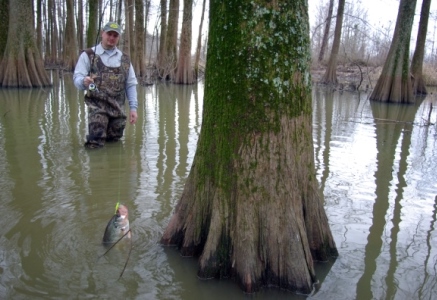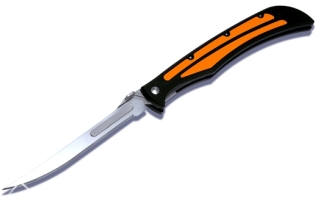By Mike Bleech
5 tips for when and how to
catch BIG trout!
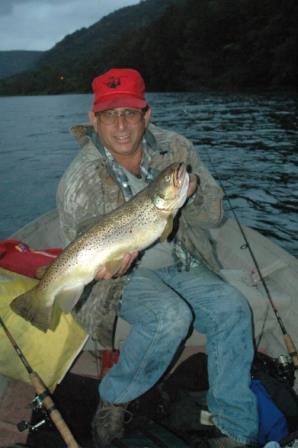
Early spring is a time when big brown trout are more likely to be caught. Even so, the often less than perfect weather holds down the number of anglers on the water. (Photo: Mike Bleech)
The stick bait hit the water in a relatively calm pocket. One twitch, a second twitch and a shiny brown shape stopped the lure. A hard hook set put a deep bend in the rod, prompting a fast run downstream. Then, the start of an upstream run seemed to let the angler gain line as the big fish swung around and past the boat.
So goes the exciting fight of a big tailwaters brown trout during early spring.
Early spring may not be the best time to fish for trout in the tailwaters of dams. It may not be the best time to get a lot of action. But for whatever reason, early spring may be the most likely time to connect with big trout, particularly big brown trout. Cast bait, lures or flies — all of these approaches can be effective if done with determination.
1. Use Color
When using artificial lures, whether it’s stick baits or streamer flies, be sure to carry several color patterns. Some should be natural colors. Some should be louder color patterns that get the attention of trout, or taunt them. Bright red, orange, yellow or chartreuse are especially attractive to trout in cold water. Gold and red is a standard color pattern for stick baits in this situation.
2. Use Big Baits
Trout are meat eaters, and they’re hungry. Big trout prefer a good mouthful, so use larger minnows, at least four inches but preferably six. Live minnows will almost certainly be more effective than artificial lures. You can also try stick baits about the same size. If your preferred fishing method is fly fishing, use streamers.
Stringing minnows may be the best way to fish them. Tie a loop or a snap to the end of the line. Insert a bait needle into the mouth and out the vent. Attach a treble hook, then pull the shank into the vent while inserting one hook point between the ventral fin and the tail. This keeps the hook toward the rear of the minnow.
Nearly all trout hooked on strung minnows are hooked in a lip.
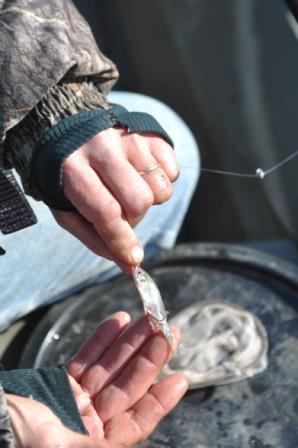
A strung shiner may be the most effective terminal rig for fishing the swift water below many dams. (Photo: Mike Bleech)
3. Capitalize on Natural Feeding Patterns
Baitfish are often injured or stunned when they pass through a dam. Trout might be feeding on these struggling baitfish for miles below some dams, so more often than not a stop-and-go retrieve is most effective. This retrieve is similar to a natural feeding pattern. When using a series of slow pulls with pauses between each, strikes generally happen during pauses.
4. Cover the Water
Reading the water in the tailwaters of a dam which impounds a medium to large river isn’t easy. Trout could be anywhere. Establishing any sort of location pattern may be impossible, so make a plan to cover as much water as possible with the time you have.
From shore: Anglers who fish from shore or wade are often limited in the amount of water they can reach. It often depends on the size of the river or creek, and on accessibility to the shoreline. Try to cover every bit of water, up and down or sideways.
Drift fishing: Drifting in a boat is generally the best way to fish a tailwaters stretch. Drifting with the current does not allow time to get a cast into all of the water. Here, the approach changes from covering every bit of water to hitting the high points.
Anchor drifting: An alternative is slow current drifting with some sort of drifting anchor. A coffee can filled with cement makes a good one. Maybe the best is a long, slender lead anchor, a shape that is least likely to hang on bottom. Adjusting the length of anchor line being used is a way of fine tuning the effects of the drifting anchor. Running the anchor line through a sturdy pulley on the bow makes this relatively easy.
Do not be concerned about the noise an anchor makes when dragging and bouncing along the river bottom. The sound of stones rolling along bottom is a natural sound. However, using lead or cement may be less disturbing to fish than an iron anchor.

A drift anchor should have a shape that is not prone to snagging on the river bottom. (Photo: Mike Bleech)
5. Go Easy on the Fish
A large majority of serious trophy trout anglers practice catch and release. Perhaps the trout of a lifetime may be kept for hanging on a wall; otherwise, killing trout makes no sense. Every dead trout is one less that might grow to trophy proportions.
Trout that will not be photographed should not be netted or removed from the water. Handle them as little as possible. Carry needlenose pliers for removing hooks. You may want to consider pinching barbs down to facilitate removal.
Bait anglers should not allow time for trout to swallow the bait. Preventing this will result in most trout being hooked in the lips where hook removal will not be too traumatic. Another very good reason for setting hooks quickly is that a trout will be less likely to reject a bait. With numerous cross-currents in the typically heavy early spring flows, line drag can be a problem. Trout do not grow large by being easily fooled.
About Mike Bleech:
 Mike Bleech has been a full-time freelance writer/photographer since 1980 with more than 5,000 articles published in more than 100 publications. He is the outdoor columnist for the Erie Times-News and the Warren Times Observer. Over the years he has become an accomplished trout fisherman and an expert at hunting the Allegheny National Forest and other public lands.
Mike Bleech has been a full-time freelance writer/photographer since 1980 with more than 5,000 articles published in more than 100 publications. He is the outdoor columnist for the Erie Times-News and the Warren Times Observer. Over the years he has become an accomplished trout fisherman and an expert at hunting the Allegheny National Forest and other public lands.
Always make sure you have the best
fillet knife by your side! See our Baracuta
line below:
2,624 total views, no views today


